|
The May Lundy mine was organized in
1879 after promising gold discoveries. Lundy was a thriving town
in its day with all the expected establishments; saloons, boarding
houses, hotels and even a Chinatown. Avalanches were a known
threat and were responsible for many deaths. That and the high
cost of mining operations were most likely the reasons for the
towns rapid decline. By 1884 the May Lundy suspended operations.
Several smaller attempts were made to take over until the 1920's
but none were successful. Remains of the originaly town of Lundy
can be found at the west end of Lundy Lake and extensive ruins
and mining equipment can be found by Onieta Lake. The surrounding
hillside are covered with smaller mines and ruins.
Submitted by: Cat Evans
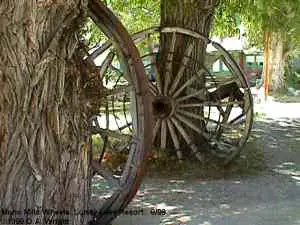
two giant wheels that are now found at the Lundy Lake, CA resort.
They originally came from Mono Mills, CA and are wheels once attached
to a horse drawn log dragging apparatus to take logs cut from the forest
to the railhead for final transportation to Mono Mills for reduction to
finished lumber. Photo taken August 20, 1999.
Courtesy David A. Wright
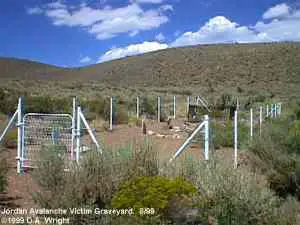
Small graveyard containing victims of the March 1911 twin avalanches that
flattened two hydroelectric powerplants located at Lundy and Jordan. August
20, 1999.
Courtesy David A. Wright
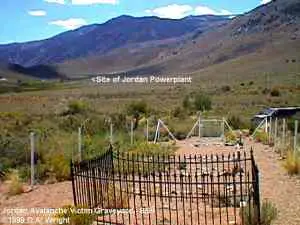
Small graveyard containing victims of the March 1911 twin avalanches that
flattened two hydroelectric powerplants located at Lundy and Jordan. Site
of the Jordan powerplant a mile across the valley indicated by arrow.
August 20, 1999.
Courtesy David A. Wright
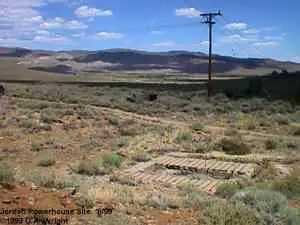
Site of the Jordan hydroelectric powerhouse, destroyed by an avalanche
March 1911. There were only two survivors, a Mrs. Mason, who lived for
two days buried under the snow with the body of her dead husband and her
surviving dog, whose bodily warmth helped to keep Mrs. Mason alive. August
20, 1999.
Courtesy David A. Wright
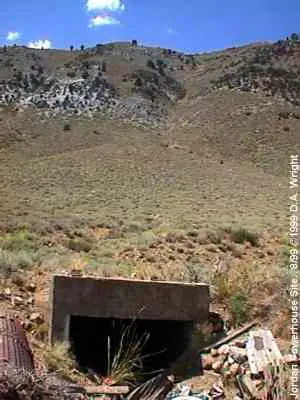
View, from the water discharge area of the Pelton flywheel that spun Jordan's
hydroelectric turbines, up the face of Copper Mountain; the source of
the deadly March 1911 avalanche that snuffed out the lives of several
people. August 20, 1999.
Courtesy David A. Wright
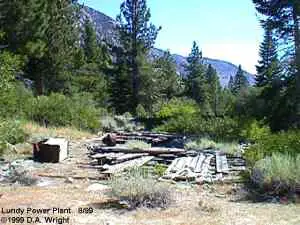
Site of the Lundy hydroelectric powerplant. As was Jordan hydroelectric
powerplant, this one too was demolished by an avalanche in March 1911.
Mr. D.O. Knowelton was on duty when the slide hit, snuffing out his life.
Ruins are of the regulator house. August 20, 1999.
Courtesy David A. Wright
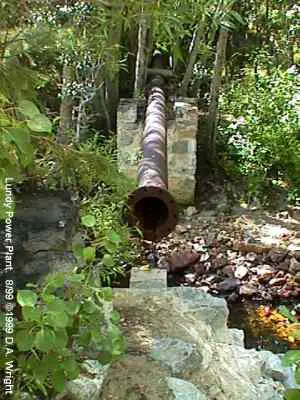
Remains of the Lundy hydroelectric powerplant penstock pipeline that collected
water high up the mountainside and carried it down the mountainside to
a giant Pelton Wheel generator. August 20, 1911.
Courtesy David A. Wright
|
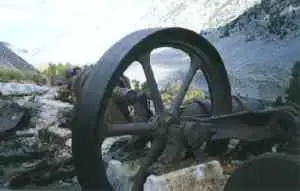
Lundy
Courtesy Cat
Evans
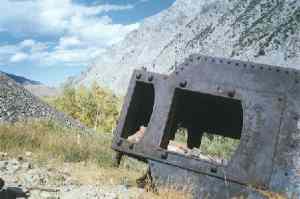
Lundy
Courtesy Cat
Evans
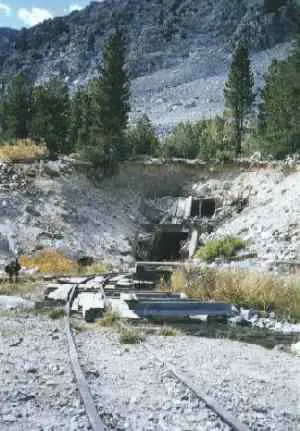
Lundy
Courtesy Cat
Evans
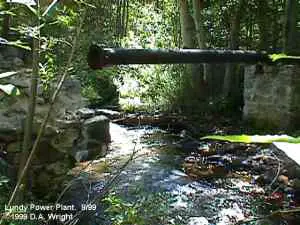
Remains of the Lundy hydroelectric powerplant penstock pipeline that collected
water high up the mountainside and carried it down the mountainside to
a giant Pelton Wheel generator. August 20, 1911.
Courtesy David A. Wright
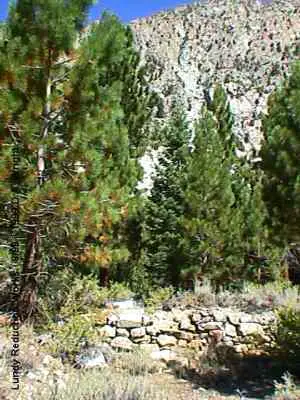
Remains of the Lundy Reduction Works, situated at the end of "Chicago
Avenue" of the former village of Lundy. The primary mines were high above
the camp. August 20, 1999.
Courtesy David A. Wright
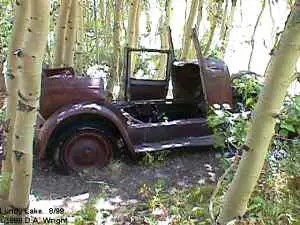
Old automobile slowly returning to the earth at the site of the former
Lundy village. August 20, 1999.
Courtesy David A. Wright
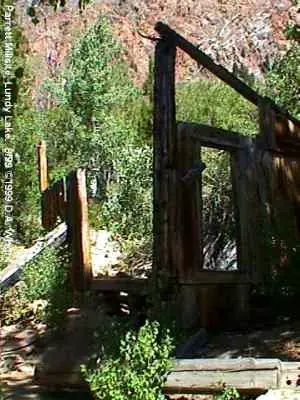
The remains of the bunkhouse of the Parrett Mill. August 20, 1999.
Courtesy David A. Wright
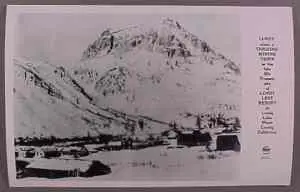
Historic Lundy shot from old Frasher Foto postcard.
Courtesy David A. Wright
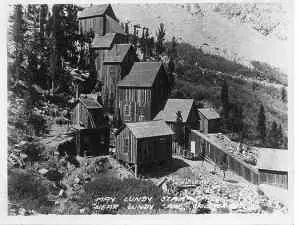
Historic photo of the May Lundy Mine.
Courtesy David A. Wright
|